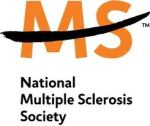 If you have been following this blog because you or a family member has Multiple Sclerosis you may know about the Sanofi takeover of Genzyme. Alternately, if you are one the many pharmaceuticals or investors or PR and advertising firms that visit us, you already do know that Sanofi completed the $20.1 billion buyout of Genzyme.
If you have been following this blog because you or a family member has Multiple Sclerosis you may know about the Sanofi takeover of Genzyme. Alternately, if you are one the many pharmaceuticals or investors or PR and advertising firms that visit us, you already do know that Sanofi completed the $20.1 billion buyout of Genzyme.
Which brings us to Campath (acquired from Bayer by Genzyme) now known, or trying to be known, as Lemtrada. We have written about it here because of the shameful desire to increase the price of a relatively inexpensive cancer treatment to $60,000 per year for Multiple Sclerosis treatment.
It is NOT YET APPROVED for use by the FDA. Campath/Lemtrada is still in clinical trials. Here is a link to the latest in their Clinical Trials.
At one point, Genzyme was giving Campath away for compassionate use in cancer patients. This was done by Genzyme to erase the yearly sales figures so that when the same drug rolls out (when approved) the $60,000 per year price sticker for Multiple Sclerosis won’t have a sales comparison number–of something much, much cheaper. Redefines the whole meaning of compassion, doesn’t it?
______________________________________________________
Health Care Reform:
While the Affordable Care Act is not yet a law–we still have until 2014 for the whole thing to go into effect–the GOP is back to using their favorite catch phrase, “death panels.”
into effect–the GOP is back to using their favorite catch phrase, “death panels.”
Here is a link to an article in Talking Points Memo about Rep. Phil Gingrey (R-GA) raising the dirty spectre of death panels and rationing yet again. Just an FYI, Rep. Gingrey voted to abolish Medicare. I think the good doctor should know better than to espouse what he does, but here’s the quote:
“[U]nder this IPAB we described that the Democrats put in Obamacare, where a bunch of bureaucrats decide whether you get care, such as continuing on dialysis or cancer chemotherapy, I guarantee you when you withdraw that the patient is going to die,” Gingrey said. “It’s rationing.”
We’re the only democratic and industrialized nation in the world without a universal plan; a plan where anyone can buy into a risk pool and get themselves covered no matter what. We all get sick, it’s part of the human condition. It’s how we treat ourselves that defines our society.
My husband now, having been without insurance for six months, can finally apply to the new high risk pool–thanks to the Affordable Care Act. We ask the representative from Georgia, “What should we do, Dr. Gingrey?” Repeal the health care law like you and every member of the GOP want to do so that my husband (and all other Americans like him) will go without health insurance and health care?
Crying tort reform over and over, as Dr. Gingrey does, isn’t going to fix the system, but considering that the good doctor has himself been sued for malpractice several times, it becomes obvious why he repeats this so often. And why he’s introduced legislation into Congress that would limit damages for pain and suffering from malpractice cases. See H.R. 5 of the 112th Congress.
Dr. Gingrey has this to say about health care reform:
“Just one year has elapsed since the government takeover of our healthcare system and Obamacare has done nothing but create hardships for Americans and place burdens on businesses,” said Congressman Phil Gingrey. “Since its passage, state budgets have been crushed by rising Medicaid costs, businesses have struggled to keep their doors open due to onerous new administrative and tax burdens, and American citizens are being threatened with rising costs and less access to quality care. As we move forward in pursuit of a full repeal of Obamacare, we must stay committed to replacing it with meaningful, cost-cutting reforms that will improve health care, lower costs, and put Americans back to work.”
Government takeover of health care? A proven lie.
If government is so bad, why does Dr. Gingrey want to use government to sharply cut medical malpractice awards? Won’t the free market just sort things out on its own?
But if Dr. Gingrey is speaking about the government creation of a high risk pool to help my husband and all Americans with pre-existing conditions get access to health care by purchasing insurance that will cover them, then I suggest he re-read his Hippocratic Oath.
As for tax burdens and small businesses, small businesses love the Affordable Care Act because they get tax breaks. And read more here, from Fox News.
Are we being threatened by rising costs? Yes. Why? Because Dr. Gingrey and his GOP ilk refuse to expand Medicare to Everyone. A national health plan that would compete for customers may inspire the private health insurers to actually produce a good product. Competition does that. As it is now, the private health insurers have zero competition.
______________________________________________________
Now onto the National Multiple Sclerosis Society:
We got a flyer from the National MS Society the other day about their teleconference series that, “is designed to support individuals with MS through the continuum of their work experiences; from staying employed, to retraining and on to post-employment options. Understanding how to access vital resources will help individuals make the best choices through any stage of their workforce journey.”
With all the money the National MS Society takes in (and spends), this piece of writing just sent me over the edge as it purports to say something without saying anything at all. They paid for that with your donation dollars. And it gets worse:
something without saying anything at all. They paid for that with your donation dollars. And it gets worse:
Applying Through Your Employer’s Long Term Disability Benefits When MS Progresses
Featured speaker Lisa Kantor, LLP from Kantor and Kantor will share her expertise as an advocate who has successfully represented people in Employment Retirement Income Security Act (ERISA) benefit claims for over 18 years. If you have MS and Long Term Disability Insurance through your employer, you will want to know how to apply for and access these vital benefits.
Let me just begin by saying that the whole reason I’m here writing this, the whole reason this Foundation exists is because of the way my husband was treated both by his Long Term Disability insurance carrier, CIGNA.
He was denied his benefits by CIGNA. Twice. We had no where to turn for help, including the MS Society at the time.
This sort of teleconference series makes the National MS Society look good, but doesn’t really help. And with all the money they have, imagine what they could do. They could start by lobbying Congress to fix ERISA–that would go a long way in helping not just those with MS but all who have been denied their benefits or who have been mistreated by their health insurer.
Listening to Ms. Kantor may be helpful, she may even gain a few clients from this teleconference, but she can’t help you “apply for and access these vital benefits.” She simply cannot and that has nothing to do with Ms. Kantor.
See, one cannot actually access their long term disability benefits. I wrote extensively about that over at Illness and Insurance Hell.
Your insurance carrier starts the process while you are still on short-term disability; they will insist you apply for Social Security benefits and prove that you have been through that process or else they’ll deny your claim. They will even offer you help with one of their attorneys to make sure you go through the Social Security process.
To make matters even worse, they will obfuscate the truth (that’s called lying) in the face of medical evidence; they make things up. And when they are threatened with legal action, they send photographers (bad ones I’d like to add) to your house to photograph you and your family. My husband has lesions on his brain and spinal cord, could the guy with the camera, snapping away at us, somehow disprove that?
Then, after all of that, they all attend conferences with federal judges (among others) to figure out how to defend against ERISA claims. Anything not to pay a claim.
Which brings me back to the Affordable Care Act, the Ryan plan to abolish Medicare and the GOP still trying to get rid of health care reform.
I ask this: If the GOP succeeds in repealing health care (doubtful) but say they do, then the provisions in the law that help people, that stop lifetime caps, give seniors free preventative care, that fill the Medicare donut hole, that stops insurers from retroactively cancelling your plan, that gives Medicare drug discounts–if the GOP stops all this then what good is that $8,000 Ryan Voucher?

![]()
![]()






